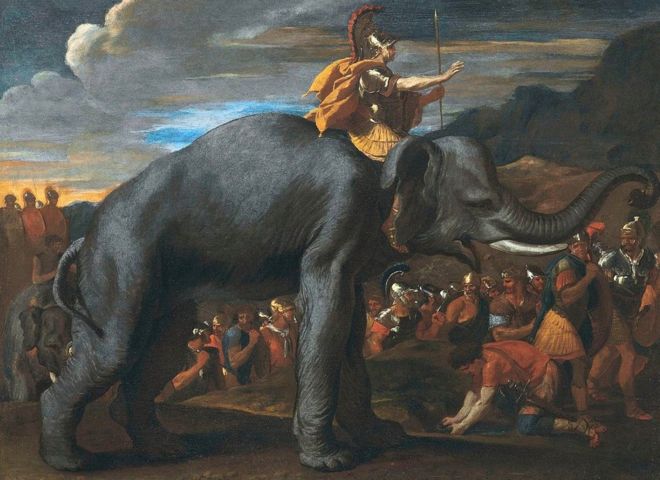Dung clue to Hannibal's Alpine crossing Scientists may be closer to revealing the route taken by Hannibal as he crossed the Alps to attack ancient Rome.
Scientists may be closer to revealing the route taken by Hannibal as he crossed the Alps to attack ancient Rome.A team says they have found a churned up layer of soil at an Alpine pass near the French-Italian border that dates to the time of Hannibal's invasion.
In
Archaeometry journal, they say the disturbed sediment was rich in microbes that are common in horse manure.
Hannibal's third century BC campaign is seen as one of the greatest military endeavours in antiquity.
He was commander-in-chief of the Carthaginian army during its second war with Rome (218-201 BC). Carthage was located in present-day Tunisia and was Rome's main military rival at the time.
In an audacious manoeuvre, Hannibal led about 30,000 troops, 15,000 horses and 37 elephants across the Alps to challenge Roman power on home soil.
It was very nearly a masterstroke: in a series of battles, the Carthaginians brought the Roman military to its knees. But Hannibal was ultimately defeated at the battle of Zama in 202 BC.
Historians, statesmen and academics have long argued about the route Hannibal took across the Alps. Firm archaeological evidence has been difficult to find.

The researchers found a disturbed layer of sediment at the pass on the French-Italian border
But an international team has now argued that the military commander led his troops across the Col de Traversette mountain pass at an altitude of 3,000m.
The results may not yet be a smoking gun, but the researchers are hopeful of finding other evidence from the deposit, such as tapeworm eggs from horses - or even elephants.
They found a churned-up mass of sediment in a 1m-thick mire at Col de Traversette that could be directly dated to the time of the invasion.
Dr Chris Allen, from Queen's University Belfast, said the layer had been produced by "the constant movement of thousands of animals and humans".
"Over 70% of the microbes in horse manure are from a group known as the Clostridia, that are very stable in soil - surviving for thousands of years," he said.
"We found scientifically significant evidence of these same bugs in a genetic microbial signature precisely dating to the time of the Punic invasion."
This crossing point was first proposed over a half century ago by the British biologist Sir Gavin de Beer, but it has not been widely accepted by the academic community.
Original story BBC: Click Here